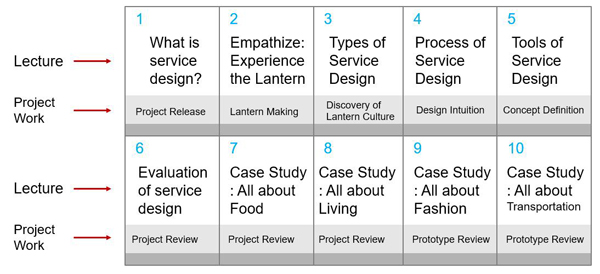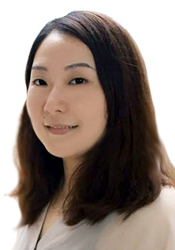Service Design
About the course
Service design, as a new design discipline covering the essence of the knowledge from different subjects such as economics, management, engineering, sociology and anthropology etc., is believed to be a new development of traditional design disciplines in the post-industrial society. Service design aims to create useful, usable, efficient and effective service experiences for the human beings, at the same time, it also can bring distinctive changes to social organizations and communities by delivering more positive value. It has the power to help future designers to deal with the complexity and fully realize their design concepts in all means.
Through the learning of this course, students can understand the theoretical knowledge of service design and establish a systematic way of user-centered design thinking: service is intangible, but the delivery of services is tangible; the process of service execution can be designed; and in a service design project, each touch-point related human beings, objects and spaces should be designed. By learning this course, students can have the access to the ability of planning, organizing, executing, integrating, and so on… in order to develop user experience and better service quality.
The teaching arrangement of this course consists of three parts:
In the first part, the knowledge of service design will be taught. It includes the history of service design, the definition development of service design, and different types of service design.
In the second part, the knowledge of how to design services will be taught. The methodology and tools of service design will be practiced as well as case studies of successful and unsuccessful service design worldwide will be discussed.
In the third part, the practical work of service design will be carried out. For each class, the selected project from the commercial or academic study will be customized to teach according to the preparation of the students. Through team work not only by students, but also by joining-in teachers, the practice of service design knowledge and tools will be connected co-creatively.
The following table is an example of a typical service design class:

About the teacher
 Dr. Chen Jiajia is a professor and MA supervisor in design in Nanjing University of the Arts. She had received her design education in China, Italy and Germany. In order to better understand people and society, she studied sociology in Nanjing University and had the doctor's degree. Her research interest mainly focuses on service design, product design strategy and design sociology. Dr. Chen has presided over and participated in a number of cooperation with local industries and some international companies such as Samsung for a long time. She has been in charge of academic research projects in different levels and has publications world-wide.
Dr. Chen Jiajia is a professor and MA supervisor in design in Nanjing University of the Arts. She had received her design education in China, Italy and Germany. In order to better understand people and society, she studied sociology in Nanjing University and had the doctor's degree. Her research interest mainly focuses on service design, product design strategy and design sociology. Dr. Chen has presided over and participated in a number of cooperation with local industries and some international companies such as Samsung for a long time. She has been in charge of academic research projects in different levels and has publications world-wide.
All materials are contributed by Nanjing University of the Arts.


 Jiangsu college students tell inspiring campus stories
Jiangsu college students tell inspiring campus stories